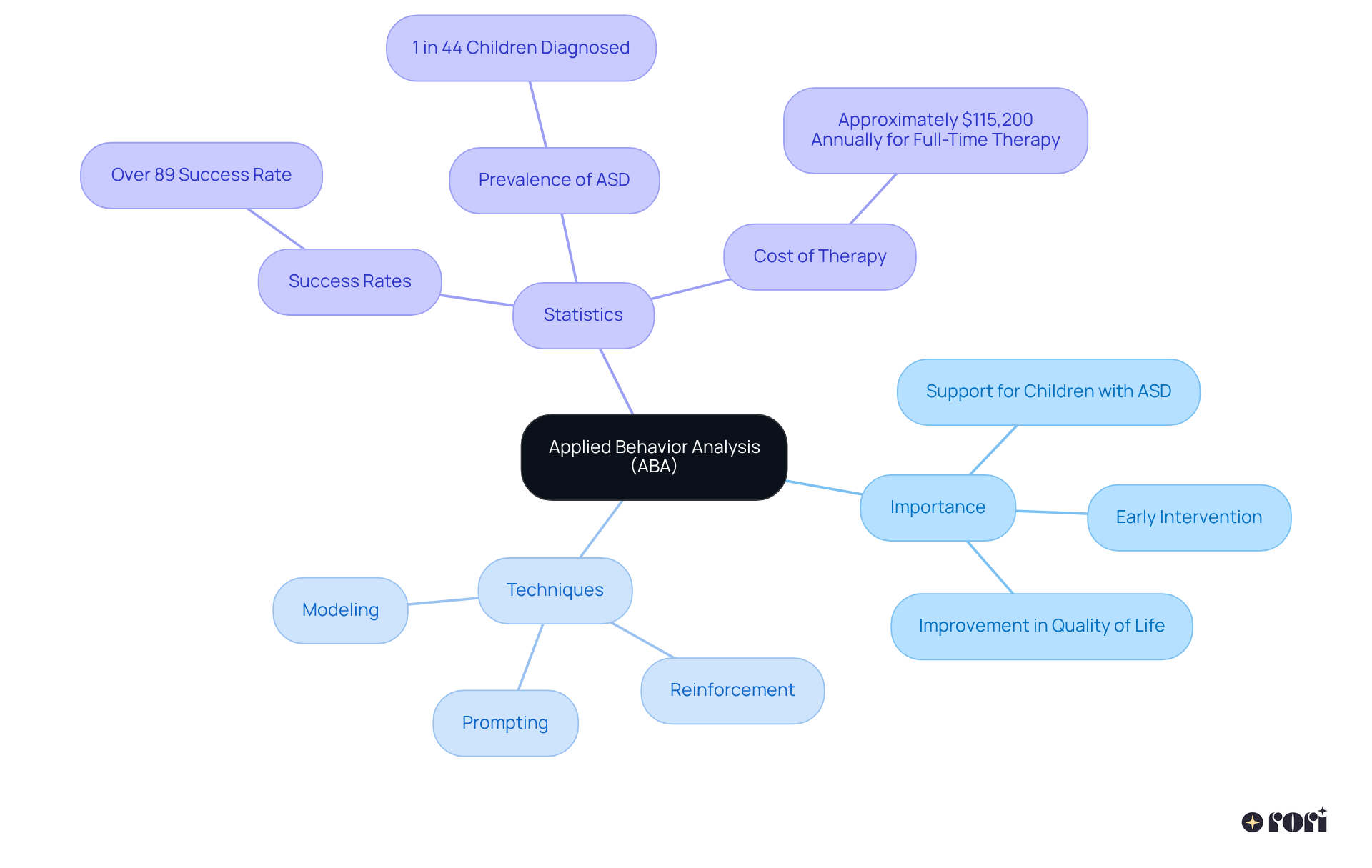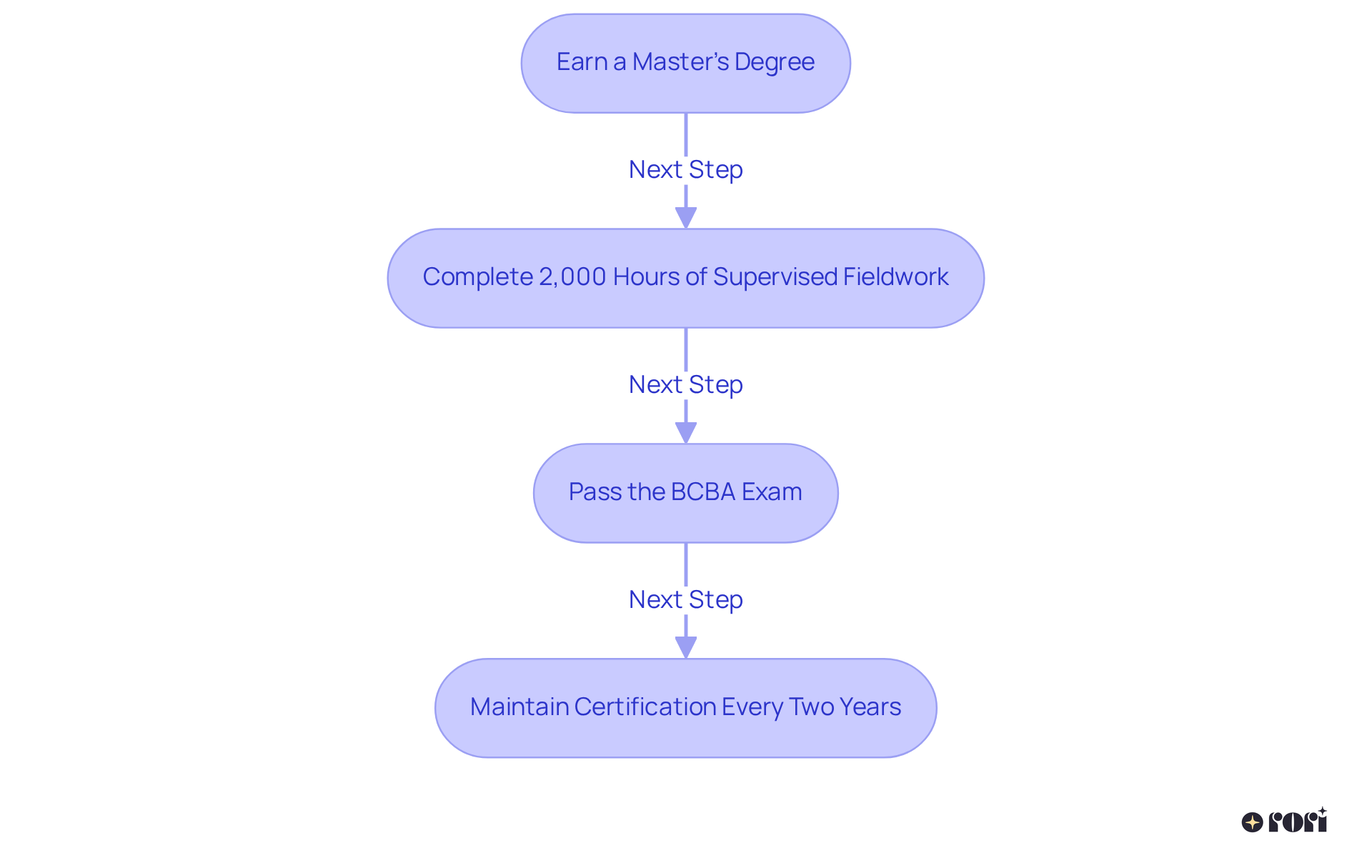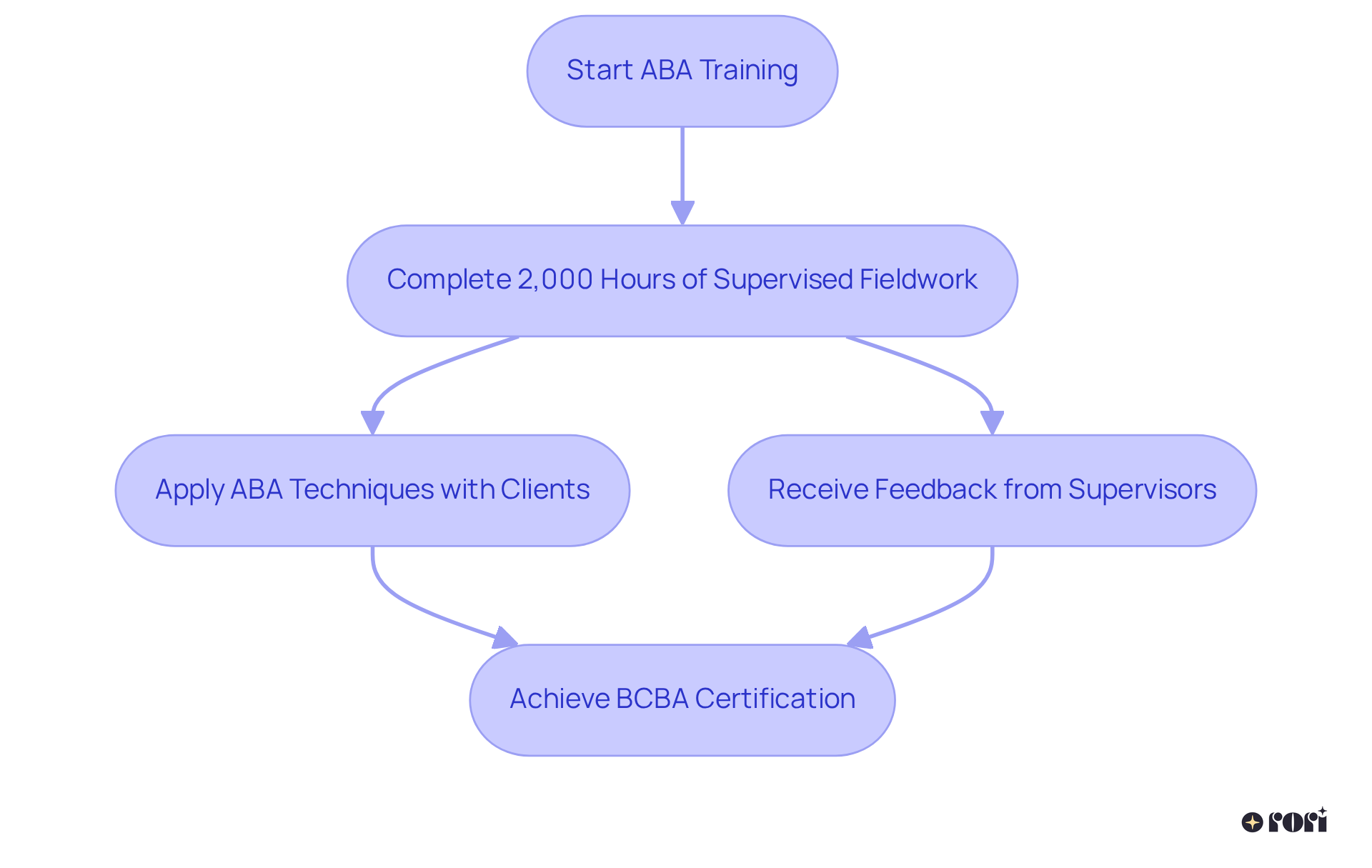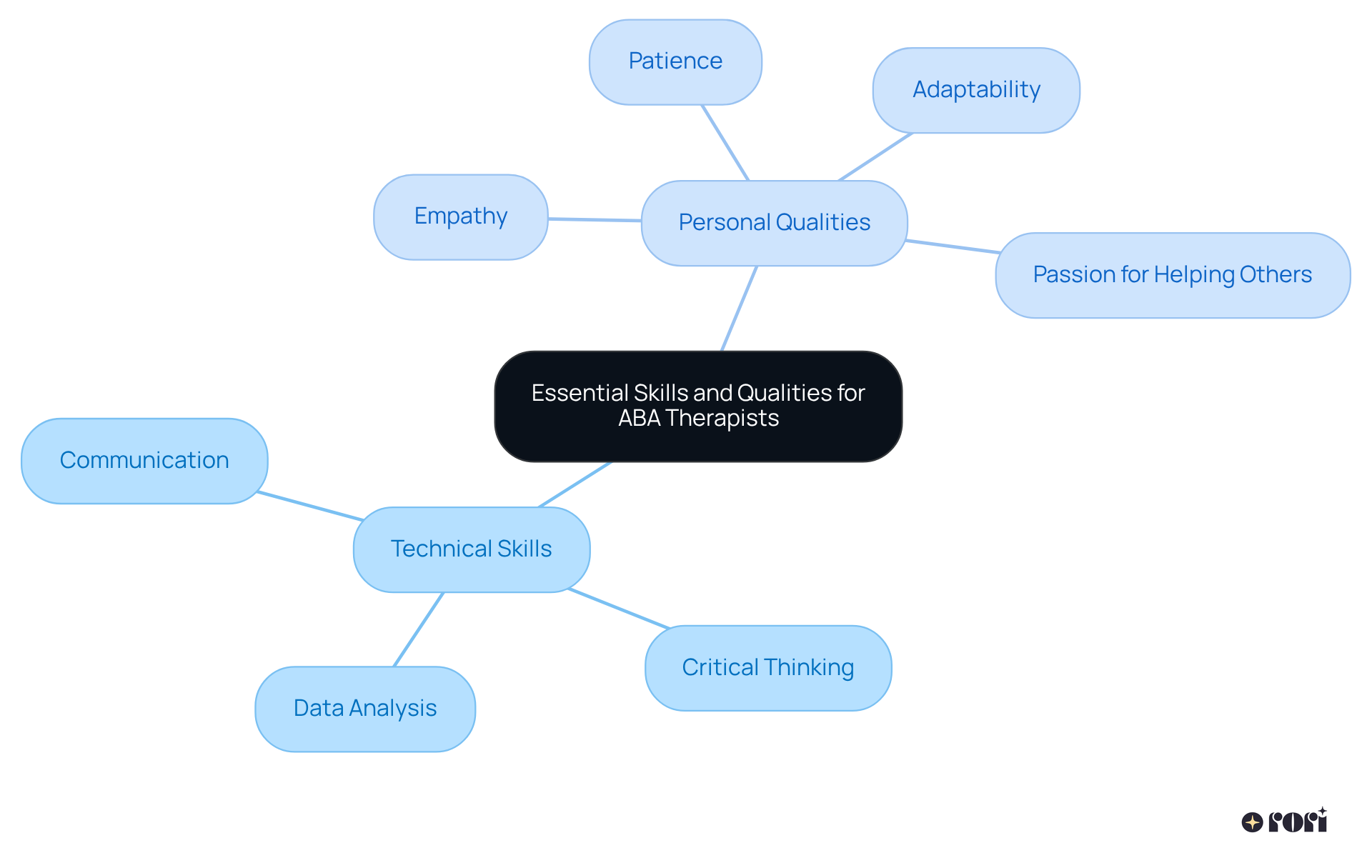This article dives into the education requirements for those interested in a career in Applied Behavior Analysis (ABA), especially if you're looking to become a Board Certified Behavior Analyst (BCBA). So, what does it take? Well, you’ll need to complete a master’s degree, clock in 2,000 hours of supervised fieldwork, and pass an examination. It’s all about gaining practical experience and committing to continuous education, which is crucial for effectively supporting individuals with autism.
Let’s explore this together! The journey may seem daunting, but with the right guidance and resources, you can make a real difference. Remember, every step you take in your education is a step toward helping others. We’re here to help you every step of the way!
Applied Behavior Analysis (ABA) is a vital tool in the world of behavioral therapy, especially for children diagnosed with autism spectrum disorders. Did you know that about 1 in 44 children in the U.S. receive an ASD diagnosis each year? This growing number highlights the increasing demand for effective interventions.
In this article, we’ll explore the educational pathways and certification requirements for those aspiring to become ABA professionals. We’ll shine a light on the essential skills and supervised experiences that help shape successful practitioners. So, how does one navigate the journey to becoming a Board Certified Behavior Analyst? And what challenges might you face in this rewarding field? Let’s explore this together!
Applied Behavior Analysis (ABA) is a fascinating scientific discipline that focuses on understanding and modifying behavior through systematic interventions. This makes it especially important for supporting children with autism spectrum disorders (ASD). Did you know that about 1 in 44 kids in the U.S. are diagnosed with ASD each year? This statistic really underscores the need for effective interventions like ABA therapy.
ABA uses techniques such as reinforcement, prompting, and modeling to encourage positive behavior changes. Its evidence-based approach has led to remarkable improvements in communication, social skills, and daily living tasks for individuals with autism. For instance, children who participate in early, intensive ABA therapy—typically around 25 to 40 hours each week—often experience significant developmental progress, including better communication skills and social interactions. Studies show that kids who receive ABA treatment before they turn five often make notable advancements in these areas, highlighting the importance of early intervention.
Recent research reveals that ABA interventions can lead to impressive gains in key areas, with success rates often surpassing 89%! These interventions are tailored to meet the unique needs of each child, ensuring personalized care that recognizes their individual strengths and challenges. Plus, the use of data-driven techniques allows professionals to continuously assess and refine treatment approaches, maximizing the effectiveness of care. And let’s not forget about telehealth ABA sessions, which have become a game-changer for families in remote areas, making therapy more accessible than ever.
The importance of ABA treatment in supporting children with autism cannot be overstated. It not only helps reduce challenging behaviors but also equips children with essential life skills. Collaborative treatment models that blend ABA techniques with other therapeutic fields, like speech therapy and occupational support, further enhance the comprehensive nature of these interventions. By promoting independence and improving quality of life, ABA therapy truly stands as a cornerstone of effective autism treatment, empowering families and clinicians alike to achieve meaningful outcomes.
Let’s explore this together! If you’re considering ABA therapy, remember that you’re not alone on this journey. We’re here to help you every step of the way!

Becoming a Board Certified Behavior Analyst (BCBA) is an exciting journey! Typically, to fulfill the applied behavior analysis education requirements, you'll need to complete a master's degree in behavior analysis, psychology, or a related field. These programs usually include at least 270 hours of coursework that meet the applied behavior analysis education requirements, covering ABA principles, ethics, and research methods, thereby laying a solid foundation for your future practice.
Once you've earned your degree, the next step is to finish a minimum of 2,000 hours of supervised fieldwork under a certified BCBA's guidance. This hands-on experience is crucial for gaining practical knowledge in the field. After that, you'll need to pass the BCBA examination, which has 160 questions to be completed within four hours. The exam fee is around $245, and if you don't pass on your first try, don't worry! You can retake the exam up to seven times within two years.
It's also important to note that BCBA certification needs to be maintained every two years through recertification. This includes completing 32 continuing education units (CEUs), with at least 4 hours dedicated to ethics training. Besides the BCBA pathway, there are also opportunities to become a Registered Behavior Technician (RBT). This role requires just a high school diploma and completion of a 40-hour training program, making it a great starting point for those new to the ABA field.
For aspiring professionals eager to make a meaningful impact in Applied Behavior Analysis (ABA), understanding the applied behavior analysis education requirements is essential. With job postings for BCBAs increasing by about 58% from 2023 to 2024, the demand for qualified professionals is on the rise! This highlights the importance of pursuing the applied behavior analysis education requirements and necessary training.
On top of that, the typical yearly wage for BCBAs is around $82,816, and there's potential for even greater income depending on your background and location. So, let’s explore this together! If you're considering this path, you’re not alone, and we’re here to help you every step of the way!

Getting involved in ABA training with supervision is so important for connecting what you learn in theory to what you actually do in practice. To achieve BCBA certification, you must meet the applied behavior analysis education requirements, which include completing at least 2,000 hours of supervised fieldwork in various settings such as clinics, schools, and community organizations. This hands-on experience lets you work directly with clients, apply ABA techniques, and receive helpful feedback from experienced supervisors.
Effective supervision not only sharpens your skills but also makes sure you’re following ethical standards and best practices in ABA. Did you know that studies show 90% of individuals see significant improvement when caregivers are actively involved in ABA therapy? This really highlights how valuable hands-on involvement is for achieving great results.
Plus, good supervision helps you grow professionally, preparing you to tackle real-world behavioral challenges with confidence. As some experienced BCBAs have pointed out, hands-on knowledge is truly invaluable. One BCBA shared, 'The true learning occurs when you are in the field, implementing what you've studied and gaining insights from those who have traversed the journey before you.' This really emphasizes how critical supervised experience is for fulfilling applied behavior analysis education requirements and developing skilled behavior analysts.
Let’s explore this together! Your journey in ABA can be incredibly rewarding, and we’re here to help you every step of the way!

Successful ABA therapists blend technical skills with personal qualities that truly enhance their ability to support children with autism. Think about it: strong communication, critical thinking, and data analysis are essential for interpreting behavioral data and making informed treatment decisions. For instance, counselors who communicate effectively can connect better with clients and their families, leading to improved treatment outcomes. Research even shows that clients exposed to motivational statements during sessions see a 30% boost in positive behavioral outcomes!
But it’s not just about skills; empathy, patience, and adaptability are equally important. These traits help therapists build rapport and trust with their clients. And let’s not forget the passion for helping others achieve their behavioral goals—this is crucial for ABA professionals. By implementing personalized treatment plans and adjusting strategies based on each individual’s progress, ABA therapists create a supportive therapeutic environment.
Did you know that ABA therapy is used in educational settings to support students with developmental disabilities in 85% of cases? This really highlights its real-world application! Cultivating these essential skills and personal attributes enables ABA therapists to foster growth and development in children with autism, ultimately enhancing their quality of life. Let’s explore this together! We’re here to help you every step of the way!

Understanding the educational requirements for Applied Behavior Analysis (ABA) is essential for anyone eager to make a meaningful impact in this field. ABA not only provides evidence-based interventions for individuals with autism spectrum disorders but also equips aspiring professionals with the skills and knowledge they need to thrive. With the increasing demand for Board Certified Behavior Analysts (BCBAs) and Registered Behavior Technicians (RBTs), pursuing the right educational pathways is crucial for those committed to this rewarding career.
This article highlights the importance of:
From obtaining a relevant master's degree to completing hands-on fieldwork and passing certification exams, each step is vital in preparing professionals to deliver high-quality interventions. Plus, the focus on personal qualities like empathy, communication, and adaptability emphasizes the holistic approach needed to support children with autism effectively.
Ultimately, the journey in ABA isn’t just about meeting educational requirements; it’s about fostering growth and enhancing the quality of life for individuals with autism. As the landscape of ABA continues to evolve, staying informed about the latest requirements and opportunities will empower aspiring professionals to make a significant contribution to the field. Embracing this journey with dedication and passion can lead to transformative outcomes for both practitioners and those they serve. Let’s explore this together!
What is Applied Behavior Analysis (ABA)?
Applied Behavior Analysis (ABA) is a scientific discipline focused on understanding and modifying behavior through systematic interventions, particularly important for supporting children with autism spectrum disorders (ASD).
Why is ABA important for children with autism?
ABA is crucial for children with autism as it utilizes evidence-based techniques to improve communication, social skills, and daily living tasks, leading to significant developmental progress.
How many children in the U.S. are diagnosed with ASD each year?
Approximately 1 in 44 children in the U.S. are diagnosed with autism spectrum disorders (ASD) each year, highlighting the need for effective interventions like ABA therapy.
What techniques are used in ABA therapy?
ABA therapy employs techniques such as reinforcement, prompting, and modeling to encourage positive behavior changes.
What are the benefits of early intervention with ABA therapy?
Children who participate in early, intensive ABA therapy (typically 25 to 40 hours each week) often experience significant advancements in communication skills and social interactions, especially if they receive treatment before age five.
What is the success rate of ABA interventions?
Recent research indicates that ABA interventions can achieve success rates often surpassing 89%, tailored to meet each child's unique needs.
How does data play a role in ABA therapy?
The use of data-driven techniques in ABA allows professionals to continuously assess and refine treatment approaches, maximizing the effectiveness of care.
What are telehealth ABA sessions?
Telehealth ABA sessions are remote therapy options that have increased accessibility for families in remote areas, making ABA therapy more convenient.
How does ABA therapy enhance the quality of life for children with autism?
ABA therapy helps reduce challenging behaviors and equips children with essential life skills, promoting independence and improving overall quality of life.
Can ABA therapy be combined with other therapeutic approaches?
Yes, collaborative treatment models that blend ABA techniques with other therapies, such as speech therapy and occupational support, enhance the comprehensive nature of interventions for children with autism.